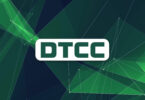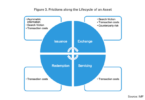Tokenization benefits
- Digitizing assets into tokens yields significant cost reductions from automation and removes the need for reconciliation between counterparties.
- Those savings enable investments to be offered in smaller denominations, widening the potential pool of investors through fractionalization.
- Instant or atomic settlement reduces counterparty risks and allows for precise settlement timing, providing greater certainty.
- Tokenization enables so-called collateral mobility. Without a 2-day settlement delay it’s easier to use tokenized securities as collateral.
- Improved transparency provides visibility into the performance of mortgages underpinning a security or the sustainability of a tokenized carbon credit.
Tokenization statistics
BCG forecasts the tokenization market will reach $16 trillion by 2030. Some believe these are conservative figures.
Regarding financial benefits, the Australian Reserve Bank estimates (hypothetically) that tokenization can reduce the cost of capital by 0.24%. Applying that to the $16 trillion figure, that’s an annual saving of $38.4 billion.
And that’s before other savings such as lower costs, improved liquidity and tighter spreads. BIS research found that for asset backed securities (ABS), tokenization can reduce spreads by 30% or more.
















